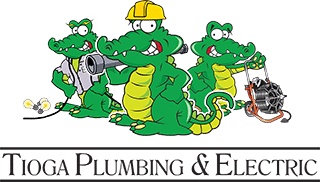
The Impact of Solar Power on Electrical Grids
Are you curious about the buzz around solar power? Solar energy is transforming how we think about electricity, offering a clean, renewable alternative to traditional fossil fuels.
From powering our homes to fueling our gadgets, solar power is an eco-friendly solution that’s gaining traction in communities like Hurst, TX, Keller, TX, and Southlake, TX. But how does it all work, and what makes it so beneficial?
In this blog, we’ll dive into the fascinating world of solar power, exploring its workings, benefits, and the challenges we face in integrating it into our electrical grids.
Understanding Solar Power
What is Solar Power?
It’s the power we get from the sun, and it’s a clean and renewable source of energy that can power our homes, schools, and even entire cities. Unlike fossil fuels, this energy doesn’t pollute the air or harm the environment.
It’s like harnessing the sun’s rays to keep our lights on and our devices charged! Solar energy can be captured through various technologies, the most common being photovoltaic (PV) panels.
These panels are often installed on rooftops or large solar farms. Additionally, there are solar thermal systems that use the sun’s heat to produce hot water or steam, which can then generate electricity. Both methods offer a sustainable way to reduce our reliance on non-renewable energy sources.
How Does Solar Power Work?
So, how does this all work? It’s pretty fascinating! Solar systems use panels made of special materials called photovoltaic (PV) cells. When sunlight hits these cells, it knocks electrons loose from their atoms.
This movement of electrons generates electricity. Think of it like magic, but it’s really just science! Here’s a quick breakdown of the process: Sunlight hits the solar panels. PV cells in the panels convert sunlight into direct current (DC) electricity.
An inverter converts DC electricity into alternating current (AC), which is the type of electricity we use in our homes. The AC electricity is then used to power your home or is sent to the electrical grid if you generate more than you need.
Additionally, solar systems can include batteries to store excess energy. These batteries can provide power when the sun isn’t shining, like during the night or cloudy days. This storage capability makes solar energy even more reliable and efficient.
Integration of Solar Power into Electrical Grids
How Solar Power is Connected to the Grid
Integrating this power into the electrical grid involves connecting individual solar systems to the larger network of power lines that distribute electricity.
This connection allows the electricity generated by solar panels to be shared with the community, ensuring that everyone can benefit from clean energy. The process starts with solar panels generating electricity.
This electricity is then converted from DC to AC by an inverter. Once converted, the electricity flows into your home to power appliances and lights. If your solar panels produce more electricity than you need, the excess power can be sent back to the grid.
This is known as net metering, and it allows homeowners to earn credits on their energy bills for the surplus energy they supply to the grid.
The Role of Inverters in Solar Energy Systems
Inverters play a crucial role in solar energy systems. They convert the DC electricity produced by solar panels into AC electricity, which is compatible with our homes’ electrical systems and the grid.
Without inverters, the energy generated by solar panels would be unusable in most applications. There are different types of inverters, including string inverters, microinverters, and power optimizers.
String inverters are the most common and are used in many residential installations. Microinverters are attached to each solar panel, offering more efficient energy conversion and better performance monitoring.
Power optimizers are similar to microinverters but are used in conjunction with a central inverter to optimize the power output of each panel.
Benefits of Solar Power for Electrical Grids
Increased Efficiency
Generating electricity close to where it is consumed boosts the efficiency of electrical grids. This proximity reduces the need for long-distance transmission, which can cause energy losses.
When homes and businesses produce their own solar energy, it lightens the load on the grid and reduces the overall demand for electricity from traditional power plants.
Additionally, this energy can be used during peak demand times when electricity usage is highest, further enhancing grid efficiency. This localized production and use make the entire energy system more effective and reliable.
Moreover, the use of solar energy can reduce the strain on the grid during high-demand periods, such as hot summer days, by providing additional power exactly when and where it is needed most.
Reduction in Fossil Fuel Dependency
One of the biggest advantages of renewable energy is its ability to reduce our dependence on fossil fuels. Fossil fuels, like coal and natural gas, are finite resources that release harmful pollutants and greenhouse gases when burned.
By switching to solar, we can decrease our reliance on these fuels, leading to a cleaner and healthier environment. This transition not only helps combat climate change but also preserves finite resources for future generations.
Moreover, reducing fossil fuel dependency contributes to national energy security by diversifying energy sources and reducing vulnerability to global fuel market fluctuations.
The use of solar energy helps stabilize energy prices and can protect economies from the volatility of fossil fuel markets.
Economic Benefits
This green energy solution also brings economic benefits. Installing solar panels can reduce electricity bills, and excess energy can be sold back to the grid. Additionally, the industry creates jobs in manufacturing, installation, and maintenance.
Government incentives and tax credits can also make solar more affordable for homeowners and businesses. Furthermore, investing in renewable energy can lead to long-term savings and financial stability, as it protects against rising energy costs and provides a return on investment over time.
As the demand for solar energy grows, so do opportunities for innovation and entrepreneurship, further driving economic growth and technological advancements in the energy sector.

Photo from iStock – Credit: bombermoon
Challenges of Solar Power Integration
Intermittency and Reliability Issues
One of the main challenges of integrating solar energy into the grid is its intermittency. Solar panels only generate electricity when the sun is shining, which means they can’t produce power at night or during cloudy days.
This intermittency can lead to reliability issues if the grid depends too heavily on this renewable source without adequate backup solutions. To address this, energy storage systems like batteries can store excess energy and provide power when needed.
Additionally, integrating solar with other renewable energy sources, such as wind or hydroelectric power, can help balance energy production and ensure a continuous power supply.
Grid Stability and Frequency Regulation
Solar energy can also impact grid stability and frequency regulation. Traditional power plants provide a consistent and controllable supply of electricity, which helps maintain grid stability.
In contrast, solar energy can fluctuate based on weather conditions. This variability requires grid operators to manage and balance the electricity supply more carefully to prevent disruptions.
Advanced technologies, such as smart grids and grid management software, can help monitor and control the integration of solar, ensuring a stable and reliable energy supply.
Infrastructure and Technological Challenges
Integrating solar into the grid also involves significant infrastructure and technological challenges. Existing electrical grids may need upgrades to handle the influx of solar energy.
This includes updating transformers, substations, and transmission lines. Additionally, advanced technologies and software are required to monitor and manage the flow of electricity from numerous decentralized installations.
Investing in modern infrastructure and adopting innovative technologies are essential steps to support the widespread integration of solar and maximize its benefits.
Technological Solutions for Solar Integration
Energy Storage Systems (Batteries)
Energy storage systems, particularly batteries, are essential for overcoming the intermittency of solar power. Batteries store excess solar energy produced during sunny periods and release it when needed, such as at night or during cloudy weather.
This ensures a steady and reliable power supply. Advances in battery technology are making energy storage more efficient and affordable, enhancing the viability of solar power.
New developments in lithium-ion batteries and other storage technologies offer higher capacities and longer lifespans, making them more cost-effective for both residential and commercial use.
Additionally, large-scale energy storage systems can help stabilize the grid by providing backup power during peak demand or emergencies.
Smart Grid Technology
Smart grid technology is another solution for integrating solar energy into the electrical grid. A smart grid uses digital communication and automation to monitor and manage electricity flows. It can dynamically balance supply and demand, integrate renewable energy sources, and improve grid efficiency and reliability.
Smart grids enable better coordination between solar power producers and consumers, optimizing energy use and distribution. This advanced technology also enhances the ability to detect and respond to grid disturbances, improving overall system resilience.
By using sensors, smart meters, and advanced data analytics, smart grids can predict energy usage patterns and adjust accordingly, reducing waste and improving overall energy efficiency.
Advanced Inverters and Grid Management Software
Advanced inverters and grid management software play a crucial role in integrating solar power. Modern inverters can communicate with the grid and adjust their output to match grid conditions.
This helps stabilize the grid and manage frequency regulation. Grid management software provides real-time data and analytics, allowing grid operators to make informed decisions and efficiently integrate solar power.
These technologies work together to ensure a smooth and reliable integration of solar energy into the existing electrical grid infrastructure.
Policy and Regulatory Considerations
Government Policies and Incentives
Government policies and incentives are vital for promoting the adoption of renewable energy. Many governments offer tax credits, rebates, and subsidies to reduce the cost of installing solar panels.
These incentives make solar installations more accessible and attractive to homeowners and businesses. Policies that mandate a certain percentage of electricity to come from renewable sources also drive the growth of solar energy.
Additionally, supportive measures can stimulate innovation and investment in solar technology, further accelerating the transition to clean energy.
Standards and Regulations for Grid Integration
Standards and regulations ensure the safe and efficient integration of solar energy into the electrical grid. These guidelines cover the technical requirements for connecting solar systems to the grid, such as voltage levels, safety protocols, and interconnection procedures.
Regulatory frameworks also address issues like net metering, feed-in tariffs, and grid access, creating a stable environment for solar energy development.
Clear and consistent standards help protect consumers and ensure the reliability and performance of solar systems. Effective regulation fosters market confidence and encourages broader adoption of renewable energy technologies.

Photo from iStock – Credit: szakalikus
Environmental Impact of Solar Power on Grids
Reduction in Greenhouse Gas Emissions
One of the most significant environmental benefits of solar power is the reduction in greenhouse gas emissions. Traditional power plants burn fossil fuels, releasing carbon dioxide and other pollutants into the atmosphere.
This power generates clean electricity without emitting harmful gasses, helping to combat climate change and improve air quality. By reducing reliance on fossil fuels, solar power also decreases the overall carbon footprint of the energy sector.
This transition to renewable energy sources is crucial for achieving global climate goals and protecting the environment for future generations.
Impact on Land Use and Local Ecosystems
While this is environmentally friendly, it can have some impact on land use and local ecosystems. Large solar farms require significant land areas, which can disrupt habitats and wildlife.
However, proper site selection and management practices can mitigate these effects. Rooftop solar installations have minimal impact on land use and are a preferred option in densely populated areas.
Additionally, integrating solar power with agricultural practices, known as agrivoltaics, can provide dual benefits by producing clean energy and supporting sustainable farming.
The Role of Professionals in Solar Integration
Importance of Skilled Solar Energy Professionals
The successful integration of solar power into the grid depends on the expertise of skilled solar energy professionals. These experts design, install, and maintain solar systems, ensuring they operate efficiently and safely.
Their knowledge and experience are crucial for overcoming technical challenges and optimizing the performance of solar installations. Skilled professionals are also essential for educating consumers and promoting best practices in solar energy use.
Investing in the training and development of solar energy professionals is key to advancing the industry and maximizing the benefits of solar power.
Training and Certification Programs
Training and certification programs are essential for developing a competent workforce in the solar industry. These programs provide education on solar technology, installation techniques, and safety standards.
Certification ensures that professionals meet industry standards and can deliver high-quality work. Many organizations offer specialized training to keep professionals updated with the latest advancements in solar energy.
Continuous education and certification help maintain a skilled and knowledgeable workforce, capable of supporting the growth and integration of solar power.
Roles and Responsibilities in Solar Projects
Solar projects involve various roles and responsibilities, from planning and design to installation and maintenance. Project managers oversee the entire process, ensuring timely and within-budget completion.
Engineers design the systems, electricians handle the wiring and connections, and technicians perform maintenance and troubleshooting. Each role is critical to the successful implementation of solar power systems.
Effective collaboration and communication among all team members are essential for delivering efficient and high-quality solar energy solutions.
Power Your Home with Solar Energy Today!
Ready to make the switch to clean, renewable energy? Tioga Plumbing & Electric is here to help you harness the power of the sun in Hurst, TX, Keller, TX, and Southlake, TX.
Our expert team will guide you through the entire process, from installation to maintenance, ensuring you get the most out of your solar investment. Save money on energy bills and contribute to a greener future.
Contact Tioga Plumbing & Electric today at (682) 224-0757 to start your journey toward a sustainable, solar-powered home! Let’s create a brighter, cleaner future together.
FAQs
What is solar power, and how does it work?
This is energy harnessed from the sun and converted into electricity through photovoltaic (PV) panels. When sunlight strikes these panels, it triggers a process that generates electricity by moving electrons
Can solar energy be stored for later use?
Yes, energy from the sun can be stored using batteries. These energy storage systems save excess electricity generated during sunny periods and release it when needed, such as at night or during cloudy days.
What are the benefits of integrating this renewable energy into the grid?
Integrating renewable energy into the grid increases efficiency, reduces fossil fuel dependency, and offers economic benefits like lower electricity bills and job creation in the clean energy sector.
What challenges does solar power integration face?
Challenges include intermittency and reliability issues, grid stability and frequency regulation, and infrastructure and technological challenges that require updates and advanced management systems.
How can I get started with solar power for my home?
To get started with solar power, consult a local solar energy professional who can assess your energy needs, recommend suitable systems, and handle the installation and maintenance of your solar panels.


